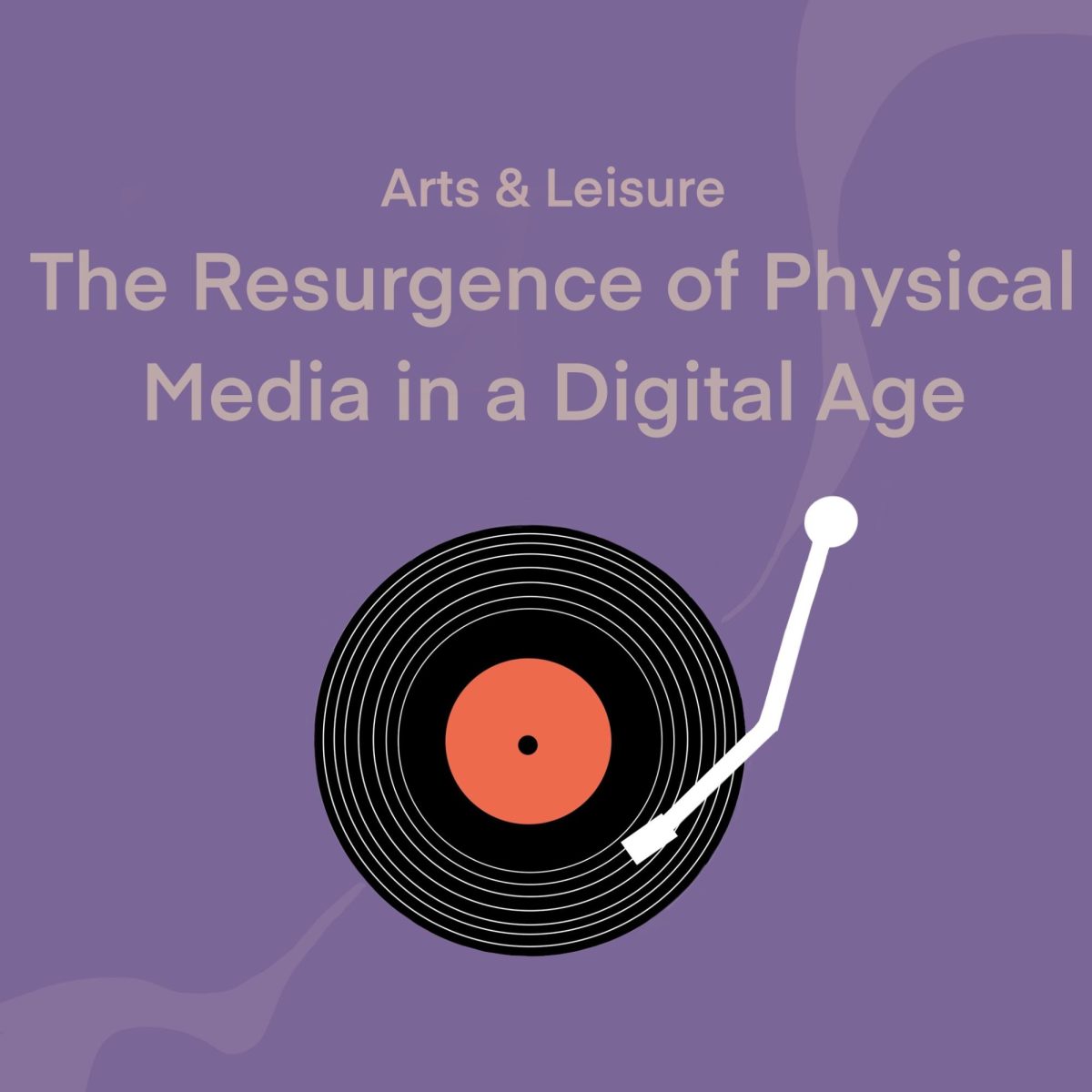The tonearm of a turntable lowers and lifts onto a freshly picked-out record. The stylus needle begins to graze the surface of the vinyl, tiny scratches whisking notes into the air as the needle follows the grooves of the disc.
Digital discoveries dominate the modern era as accessible music streaming increases efficiency. Both older and younger generations frequently use music services like Spotify and Apple Music. Yet, physical music in the forms of vinyl records, CDs and cassette tapes has gained traction in the past few years,.
The Recording Industry Association of America breaks down digital and physical music services’ revenue. In 2022, physical music accounted for 11% of all music shipments. Another [year] graph by the RIAA examines total annual U.S. recorded music revenues by format and how vinyl sales have increased gradually since 2005. In 2022, long-play and extended-play records alone gained around $1.2 billion dollars in revenue. The last time revenues for records amassed a billion dollars before 2022 was 1985.
Older generations can find solace in entering record stores or using CDs as it brings them back to a time when they were young, reminding them of past experiences. Younger generations feel fulfilled by a similar sense of comfort when listening to music in a physical form.
Sophomore Lotti Aust recalled her own experiences with collecting various pieces of vinyl and CDs, which began with vinyls in middle school.
“[Physical media] can’t be taken away like digital songs, [digital songs] can be taken down by any platform whenever. So I like to physically own the [music],” Aust said. “And I feel like when you have a physical item it makes it more personal, simply based on the fact that it’s physically there and you can hold it,” said Aust.
Many audiophiles regard physical media as more appropriate for showcasing particular styles of music as producers shrink songs to upload them digitally, causing a loss of information.
“In older songs where they were using actual analog instruments, you can definitely tell the difference between the digital and a record. They were made to be put onto a record, whereas newer songs weren’t made specifically for that intention,” Aust said.
Teenagers’ increased purchasing of physical music has grown through the usage of social media, where it has gained traction amongst younger audiences. However, physical music is less accessible than digital music, ranging from five to 70 dollars depending on the artist, album, genre and newness. Collections can be difficult to compile without large expenditures, making them more unattainable. Record players are rarely available in vintage stores as years progress like many other devices, such as walkmans or cassette players.
While digital music is arguably convenient, physical media’s revival expresses consumers’ shift in desire. In a digital landscape characterized by fleeting trends and impermanence, physical music speaks for a desire for deliberate engagement within media. Each format caters to different consumers, yet the rise in popularity of physical media establishes its timeless appeal.











